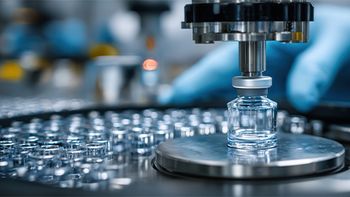
- Pharmaceutical Commerce - February 2022
- Volume 17
- Issue 1
Booster Rollout Lessons for Pharma
With the delivery of Covid-19 booster shots in full swing, how does this effort compare to the initial vaccine distribution—and is the pharma supply chain adapting accordingly?
Without a doubt, Covid-19 has shone a spotlight on the vulnerability of the world in the face of a serious pandemic. On a human front, it has caused millions of deaths and has left people with life-changing disabilities and ongoing health problems. And, well-documented, on an economic front, the crisis has cost the globe billions of dollars and has left people jobless and struggling to make ends meet.
Against such a grim backdrop, governments across the world realized they had to act swiftly to ensure a vaccine was created, produced, and rolled out as efficiently as possible. This was a necessary act to ensure the global population felt as safe and reassured as possible in the face of an increasing death rate and ever-climbing hospitalization figures.
Most consider the creation and rollout of the Covid vaccines a remarkable feat. When you consider the number of years that other vaccines have spent in development before being issued, the fact that already-large proportions of the world are now receiving their Covid booster jabs is a testament to what the human spirit can achieve when push comes to shove.
However, the vaccine rollout has not been without its problems. Parts of the world are still lagging far behind when it comes to receiving the vaccine, and global supply chains have had to adapt and amend major processes to cope.
As we are now firmly into the deployment of booster vaccines for the coronavirus, it is worth analyzing the lessons that have been learned across the US pharmaceutical supply chain—and to see what changes have been applied to ensure the booster rollout continues to be done quickly and efficiently.
Time for a boost
The FDA recently announced a shortening of the interval between the primary series of Moderna’s coronavirus vaccine and a booster dose to five months, as it looks to bolster protection against the fast-spreading Omicron variant. The belief is the shorter interval time, reduced from six months for people aged 18 and above, will provide better protection sooner against the variant, which is driving up infections and overwhelming hospitals.
Already cleared for adults, the FDA earlier this month also authorized the use of a third dose of the Pfizer and BioNTech vaccine for adults and children ages 12 to 15, and narrowed the interval for booster shot eligibility to five months from six. The agency also authorized a third shot for children aged 5 through 11 years who are immunocompromised. A single booster of the J&J vaccine was cleared last fall as well for use in adults.
Previous problems
It goes without saying that first-and-second dose vaccine and booster distribution will continue to be a mammoth undertaking—and one which, just a year ago, placed the entire US pharmaceutical sector under extreme pressure to meet.
One of the overriding reasons for the global vulnerability seen over the past 18 months is a basic one. Most industries, governments and countries were simply not prepared for such a devastating pandemic that appeared seemingly out of nowhere. The world was placed into lockdown to limit the virus’s spread, but this led to major logistical issues. Problems with sourcing the quality and quantity of supplies needed, and ongoing problems with getting them distributed across the globe, are still being experienced now.
This has led to a green light from vaccine and drug counterfeiters, ever ready to chance their luck and make a quick profit from the misery of others, people desperate to protect themselves against the virus.
Therefore, what lessons have been learned? And have they been put into practice across the US supply chain?
The continued repatriation of supply chains
One of the major issues highlighted by the pandemic was the fact the globe had become overly reliant on just one geography—namely China—for the supply of medication and medical equipment. Not only did this cause a damaging bottleneck, placing an inordinate amount of stress on the rigid supply chains connected with Chinese production, it placed an unrealistic demand on resources.
Fast-forward to today and while there is a still an overwhelming reliance on geographies such as China for the supply of much of the world’s medicine, the Covid pandemic has seen this pattern starting to shift.
We are now seeing a move toward local production and sourcing through the repatriation of supply chains into the US. This repatriation is a big deal for the future of the pharmaceutical sector. It signals confidence in the capabilities of the US, resulting in ongoing investment. This should mean an increase in job creation and a renewed interest in the brand name of the US as a global center to produce essential pharmaceuticals.
Track-and-trace cooperation powered by Pharma 4.0
The advent of the virus has highlighted the importance for product track and trace to work together, resulting in a supply chain which will minimize costs for pharma companies and lead toward a new standard of openness and cooperation in the Pharma 4.0 era.
Indeed, we are already seeing the implementation of agile supply chain regulation that will require a strong industry-standard open interface and interoperability. To do this, the hardware and the software among different vendors needs to be much more aligned and should work more closely together, resulting in more open and cooperative serialization processes. Machines need to speak to each other in a common language, regardless of the manufacturer.
The importance of this cannot be overstated. The ability to track every single product, at every single stage of the process from source to supply to consumer, is essential.
Industry 4.0 will revolutionize the way the biopharma sector works. Any US-based industry player that doesn’t start preparing for it now will be left languishing far behind.
Once only possible for international blue-chip corporations, robotics will become much more affordable and available to organizations of every size. From picking products at a warehouse to getting them ready to ship, autonomous robots can quickly and safely support manufacturers. Likewise, we will see distribution centers that will use autonomous cranes and trucks to streamline operations as they accept and process shipping containers.
Since connected machines collect a tremendous volume of data that can inform maintenance, performance and other issues, as well as analyze that data to identify patterns and insights that would be impossible for a human to do in a reasonable timeframe, Industry 4.0 offers the opportunity for manufacturers to optimize their operations quickly and efficiently by identifying what needs attention.
The simple fact is that no one knows yet just how often Covid booster jabs will need to be administered. They could perhaps be a long-term solution. If so, Industry 4.0 needs to form the centerpiece of all future supply chain structures.
A continued focus on ESG
All firms involved in the US pharmaceutical track-and-trace space should treat environmental, social and governance (ESG) as a cornerstone of their business to collectively benefit the entire pharma supply chain and cold chain.
Support of global ESG initiatives is an important step forward to stamping out the issue of fake drugs, whether these are fake Covid vaccines or any other type of drug or piece of equipment.
The UN Charter on Sustainable Development is a clear example of moves that are being established to ensure a safer and more responsible world. Every company should be familiar with its contents and should be doing all they can to adhere to them to be prepared for potential future collective battles against global pandemics.
Applied learnings
I do not want to take away from the fact that the pharmaceutical sector has achieved great things since the start of the pandemic. However, there is a lot of food for thought in terms of the changes that need to be made to ensure future Covid vaccine boosters—and future unrelated pandemics—can be handled more efficiently and smoothly.
The importance of ongoing streamlining cannot be emphasized more. Even now, as the Covid booster program has been in force for a few months, we are seeing no let-up in the need for its swift delivery and rollout.
For example, Meta Platforms Inc., the technology giant behind Facebook, Instagram and WhatsApp, has said it requires Covid booster shots for employees to work on-site at its US campuses. The company has also stated it will delay fully opening of those offices until late March, yet another sign that the Omicron variant is shifting corporate reopening plans.
The global pharmaceutical sector is one that is constantly evolving—and the signs are clearly evident that it will need to keep evolving, perhaps at a faster rate than it has ever done before.
About the author
Alf Goebel is CEO of Advanco.
Articles in this issue
almost 4 years ago
Pharmaceutical Commerce - February 2022 Issue (PDF)almost 4 years ago
A Lowdown on Logisticsalmost 4 years ago
The Shifting Course in Logistics Supportalmost 4 years ago
How 3PLs Can Up Their Pharma Gamealmost 4 years ago
For Industry in Flux, is M&A Jolt in Store?almost 4 years ago
CAR-T Therapies: Three Supply Chain Considerationsalmost 4 years ago
The Risk of Doubling Down on Pharmaalmost 4 years ago
Striving for Authentic, Transparent Track and Tracealmost 4 years ago
2022 Pharma 3PL Service Provider Directoryalmost 4 years ago
Assessing Adoption of Hybrid DtP ModelsNewsletter
Stay ahead in the life sciences industry with Pharmaceutical Commerce, the latest news, trends, and strategies in drug distribution, commercialization, and market access.




